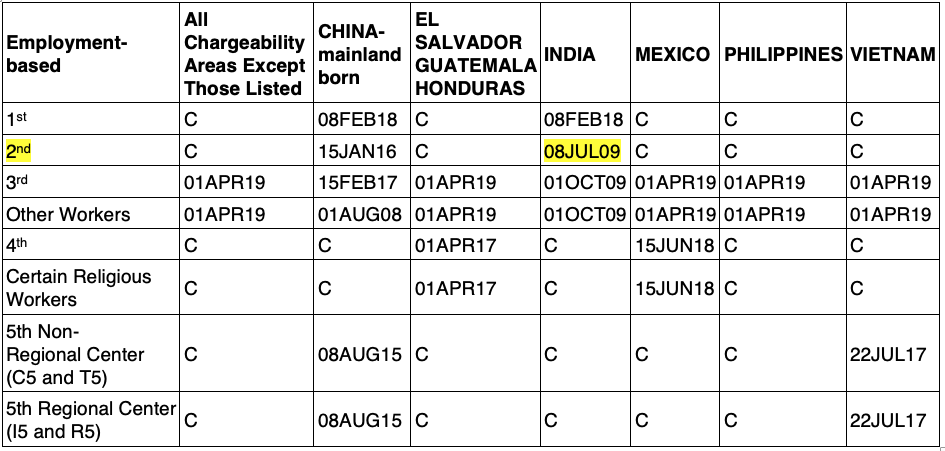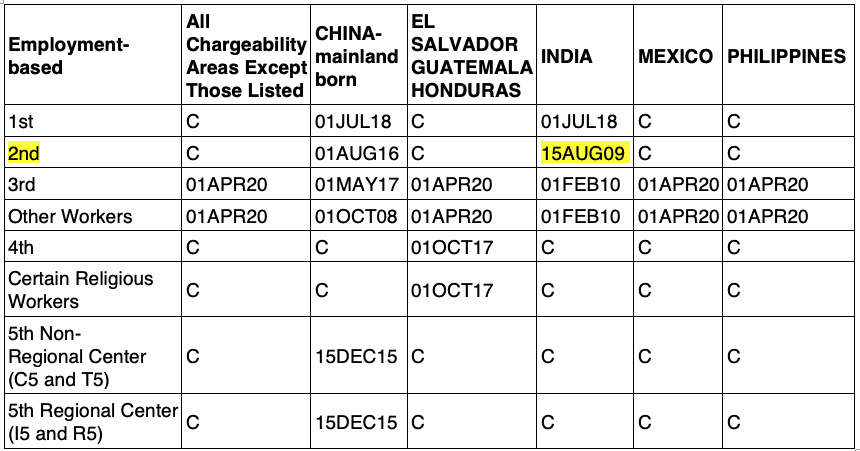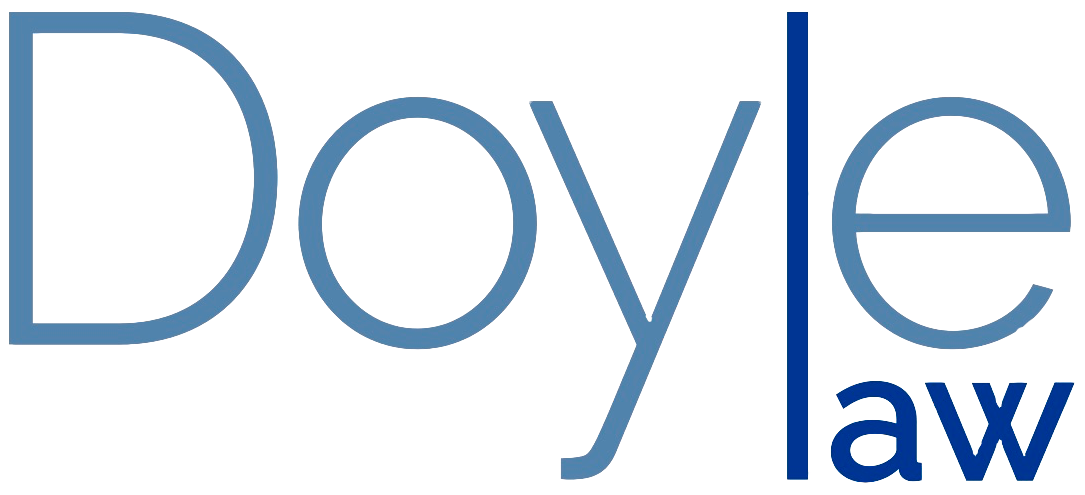ARTICLE
How To Use the Visa Bulletin
The Visa Bulletin can be quite an important document for many immigrants coming to the United States. It's important that you know how to use the Visa Bulletin in order to track your case progress.
What is it?
Here is a link to the Visa Bulletin Website. https://travel.state.gov/content/travel/en/legal/visa-law0/visa-bulletin.html The Visa Bulletin changes monthly, and it determines who is allowed to get a green card and when they are allowed to have that green card. If you want to immigrate to the United States this document could possibly affect you. In particular, if you are in a family based or employment-based preference category, you need to check the Visa Bulletin monthly. Please keep in mind, if you are an immediate relative or have another type of case, this document usually does not pertain to you.
How does the Visa Bulletin work?
We’ll use an example to learn how this document works. Let's say for instance, that you are a researcher and you have filed an I-140 petition in the employment based second preference category (EB-2) based on a national interest waiver. You were born in India. You filed the case on May 15, 2019, which is your priority date. As of August 2020, the Visa Bulletin says that you must wait a while before you get your green card.
Take a look at the chart for EB Final Action Dates:

First, you will notice that India is in a special category all by itself. First, find the second preference row, then move over to India. Right now, if you filed a case before July 8, 2009, you are eligible to move forward with the last phase, which is the green card application. If you filed a case after that time, you have to wait.
What is the difference in the Final Action Dates vs. Dates for Filing Charts?
Even though our Indian client cannot finish her green card application right now, that does not end our inquiry. We next look at the Dates for Filing Chart to see if that date is “current” or matches her priority date. If so, then she can start filing the green card application.

Unfortunately, our Indian client is also not eligible to go ahead and start filing her green card application, because her priority date of May 15, 2019 is AFTER both dates on the chart for her category. For many applicants, though, it pays to check both charts.
How long will my case take?
We use the Visa Bulletin to estimate how long our clients have to wait for a green card. For Indians in the EB-2 category, right now the way is 11 years. (2020 – 2009) For Chinese people, the wait is 4 years (2020 – 2016). For people born in other places in the world, it says “C” which means current. Right now, thankfully, a lot of these categories are current. The two main countries affected in employment-based categories are China and India. The reason? They are the most populous countries in the world, and they have more applicants for these cases than all other countries. It makes the line longer. One more item to think about when estimating your processing time. This is only an estimate, because the Visa Bulletin does not move in REAL TIME. It can stay the same, move forward, or move backward (retrogress) each month. The July Visa Bulletin shows India’s EB-2 final action date as July 8, 2009, which is more than a month’s advancement. Historically, though, this category is very slow and I believe that it will actually take more than 11 years for our Indian client to get her green card.
How to think about all of this – what does it all mean?
I’ve just discussed a lot of numbers and letters. For an analogy, think about the Visa Bulletin as if you are going to a deli. When you get to the deli, there's a long line of people in front of you. You're going to have to wait in line. That's similar to immigration to the United States, because you're waiting in line. And when you get to the deli counter, you'll pull a little number. When your number is called, you will be served. The Visa Bulletin is very similar to that idea. When you have a priority date and your date matches the Visa Bulletin, then immigration will serve you and you'll be able to move forward with your green card application.
If you would like to work with Audra and her team on your immigration case, contact us today.
office@doylelawatl.com
www.doylelawatl.com
404-325-5858
National Interest Waiver
Audra M. Doyle, Esq.
Doyle Law has many years of experience filing National Interest Waiver petitions. We find that it is an extremely valuable tool for our employment-based immigrant clients who are working in a field that is in the national interest, because it allows them to avoid the time-consuming and costly process of a traditional PERM Labor Certification.
The National Interest Waiver (NIW) can be self-sponsored - you do not have to have a US employer file this case on your behalf - and we find that it is very helpful for those who do not have a permanent job offer in the United States. Typically, our clients for this category are research scientists, and they are working in academia such as at a university in the US or they're working at a US research institution. We also file National Interest Waivers for entrepreneurs who are creating U.S. jobs, or for other clients whose work is in the national interest of the United States.
There are several elements of this case which must be satisfied in order to be approved. First, this is an EB-2 petition, which means that you need to have either an advanced degree (a Master’s degree or higher) OR you need to demonstrate that you have exceptional ability in your field. The regulations require you to meet three of the following six criteria:
- a degree, diploma, certificate, or similar award from an institution of learning related to your field;
- a professional license or certification;
- 10 years (full time) of professional working experience;
- a high salary compared to others working in your field that demonstrates your exceptional ability;
- memberships in professional associations;
- recognition for your achievements and significant contributions to your industry or field by your peers, government entities, professional, or business organizations; or
- other comparable evidence of eligibility.
After you satisfy the underlying requirements for EB-2 classification, we then move on to the requirements for a National Interest Waiver. The controlling case is Matter of Dhanasar, 26 I&N Dec. 884 (AAO 2016), which provides the three elements that you need to have to be eligible for a National Interest Waiver.
Prong I
First, you need to provide evidence that your work has substantial merit, and also that it has national importance. In considering this requirement, let’s use an example: A scientist is working in a university laboratory, looking for a new vaccine for a disease that is affecting many Americans. For our National Interest Waiver petition we could show that work on the vaccine is of substantial merit to the field, because other scientists can use this vaccine and your techniques/methods/experiments to advance their own work, and also that it has national importance because it will improve the health of many Americans. Further, we would argue that this work is beneficial for the entire United States, not just a small group or a small location, and has broad national-level importance. Importantly, Matter of Dhanasar takes away the limitation of purely focusing on the geographical reach of an endeavor, and instead allows us to demonstrate the broader implications of an endeavor that takes place in one location.
Prong II
Next, you need to demonstrate that you are “well positioned to advance the proposed endeavor”. Let’s go back to our example of the scientist at the university: We can see from the description above that the scientist is likely one of the key people on the project. However, if she is simply a research technician or doing one small part of the project that can easily be done by another lab worker, Prong II would be difficult to meet. We not only must demonstrate your current work, but also your past accomplishments that make future discoveries more likely. Additionally, the USCIS looks to see how your work has been disseminated to the field, and used by other scientists. Lastly, we discuss your key skills and talents that assist you in moving the endeavor forward.
Prong III
The last part of a National Interest Waiver requires that we show that a waiver of the job offer and a waiver of the normal labor certification requirement is justified. At Doyle Law we provide a legal argument to USCIS for this section of the case, referring back to the evidence presented. This argument includes a discussion of all of the elements of the case, and we demonstrate how the proposed work has substantial merit, is of national importance, and that the petitioner (you) is best suited to move that work forward, and compared to these elements, the need for a PERM Labor Certification is outweighed by the need Americans have of the benefit that the work provides to the United States.
Once the National Interest Waiver is approved, you will then use the Visa Bulletin to determine your eligibility for filing a green card application. USCIS will review that application and look to see if you are still working according to the evidence you provided in the NIW petition.
Do you have further questions? Please contact Audra at Doyle Law for a case evaluation. www.doylelawatl.com/contact/
